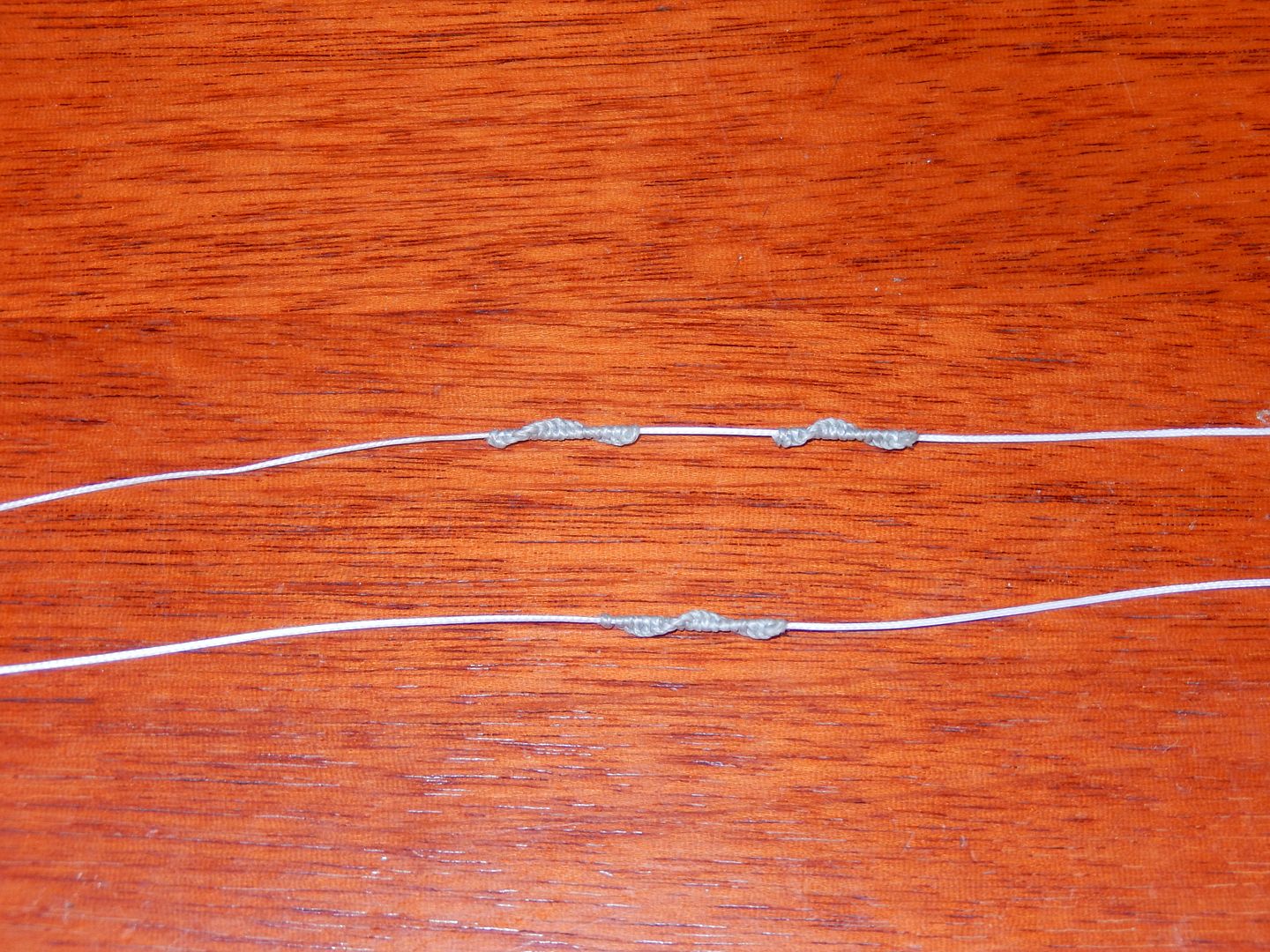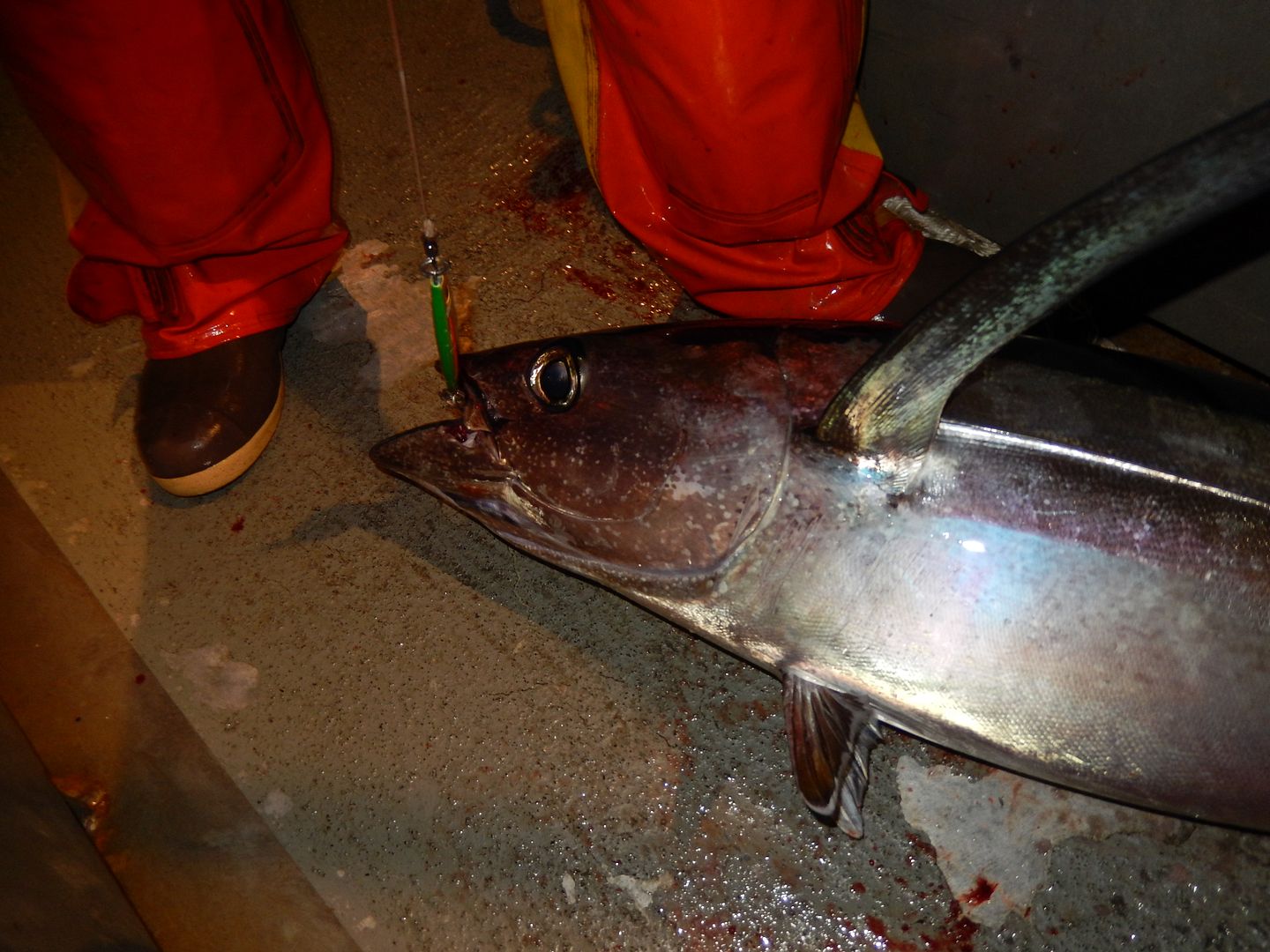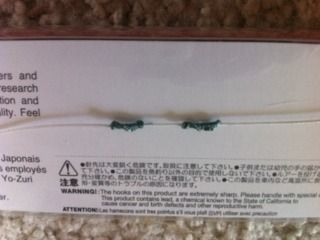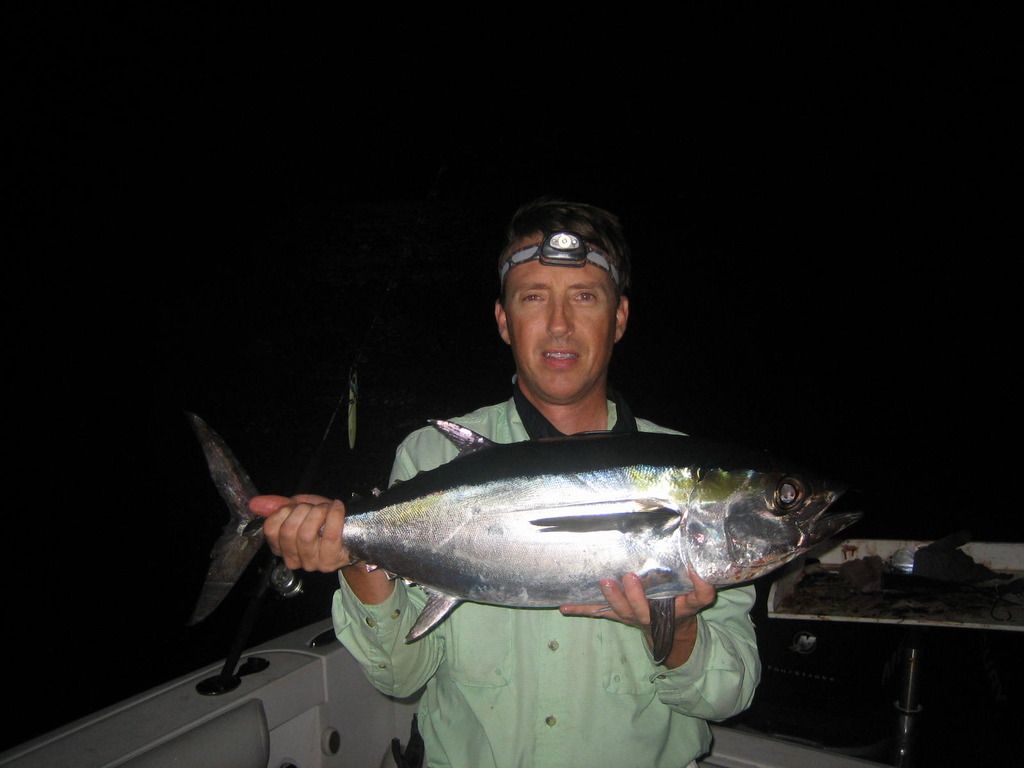For tuna jigging, right tackle is important and sizes/colors of jigs are important. But the most important thing is to know right depth and fish at the right depth.
Color coded lines revolutionized tuna jigging by giving you right depth.
I doubt anyone in the US have used the color coded line longer and more extensively than I have used for tuna jigging.
However, I found there are a few issues of using the lines.
1. When fishing in darkness, the color coded lines are useless.
2. When casting, it is hard to know right depth.
3. Colors fade out after using one year.

So I tried to find other way to overcome the issues.
The best way I can find is to mark depth by wrapping other braid line using half hitch knot as you see in the picture. You can see it and you can feel it with your fingers.
I have one mark at 100 ft and two marks at 200 ft. As the prime zone for tuna is 80 ft - 200 ft. 100 ft mark and 200 ft mark is good enough.
I had 200 lb tuna at 100 ft mark on last Sat/Sun and had longfin at 110 ft on Thur/Fri trip.
Though it was dark on both trips, I could manage to jig right depth using this method.
bigeye at 100 ft.

longfin at 110 ft

Color coded lines revolutionized tuna jigging by giving you right depth.
I doubt anyone in the US have used the color coded line longer and more extensively than I have used for tuna jigging.
However, I found there are a few issues of using the lines.
1. When fishing in darkness, the color coded lines are useless.
2. When casting, it is hard to know right depth.
3. Colors fade out after using one year.

So I tried to find other way to overcome the issues.
The best way I can find is to mark depth by wrapping other braid line using half hitch knot as you see in the picture. You can see it and you can feel it with your fingers.
I have one mark at 100 ft and two marks at 200 ft. As the prime zone for tuna is 80 ft - 200 ft. 100 ft mark and 200 ft mark is good enough.
I had 200 lb tuna at 100 ft mark on last Sat/Sun and had longfin at 110 ft on Thur/Fri trip.
Though it was dark on both trips, I could manage to jig right depth using this method.
bigeye at 100 ft.

longfin at 110 ft








